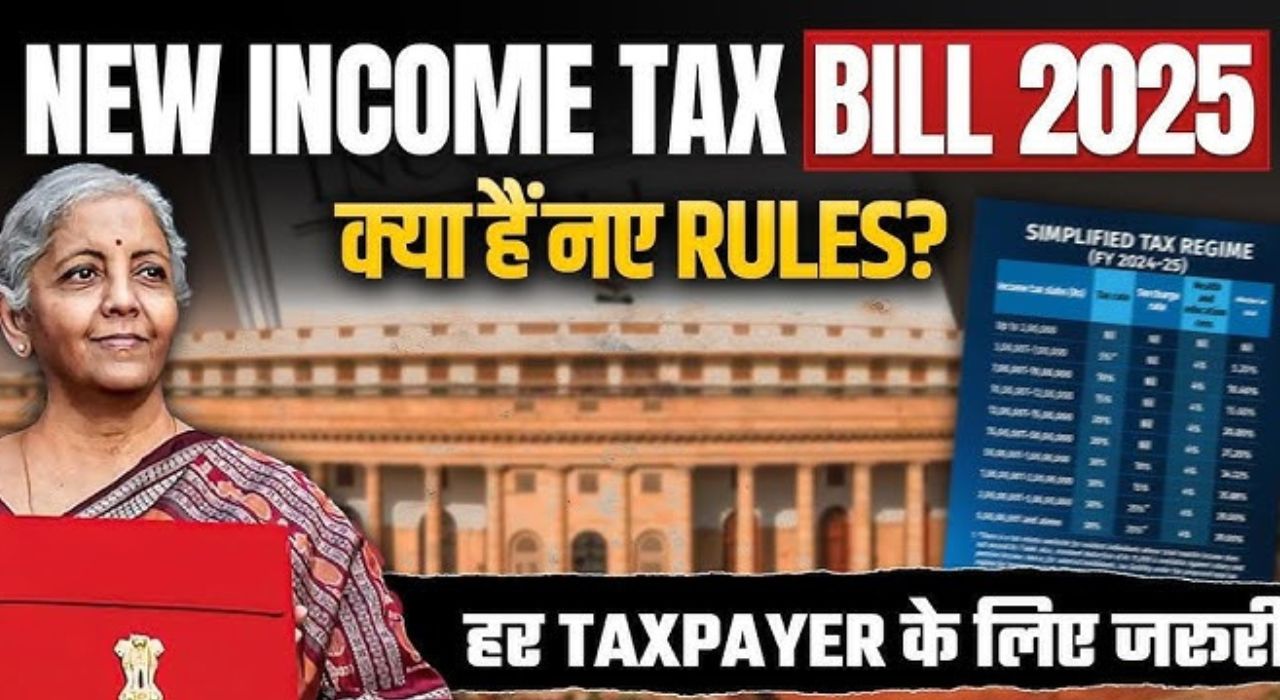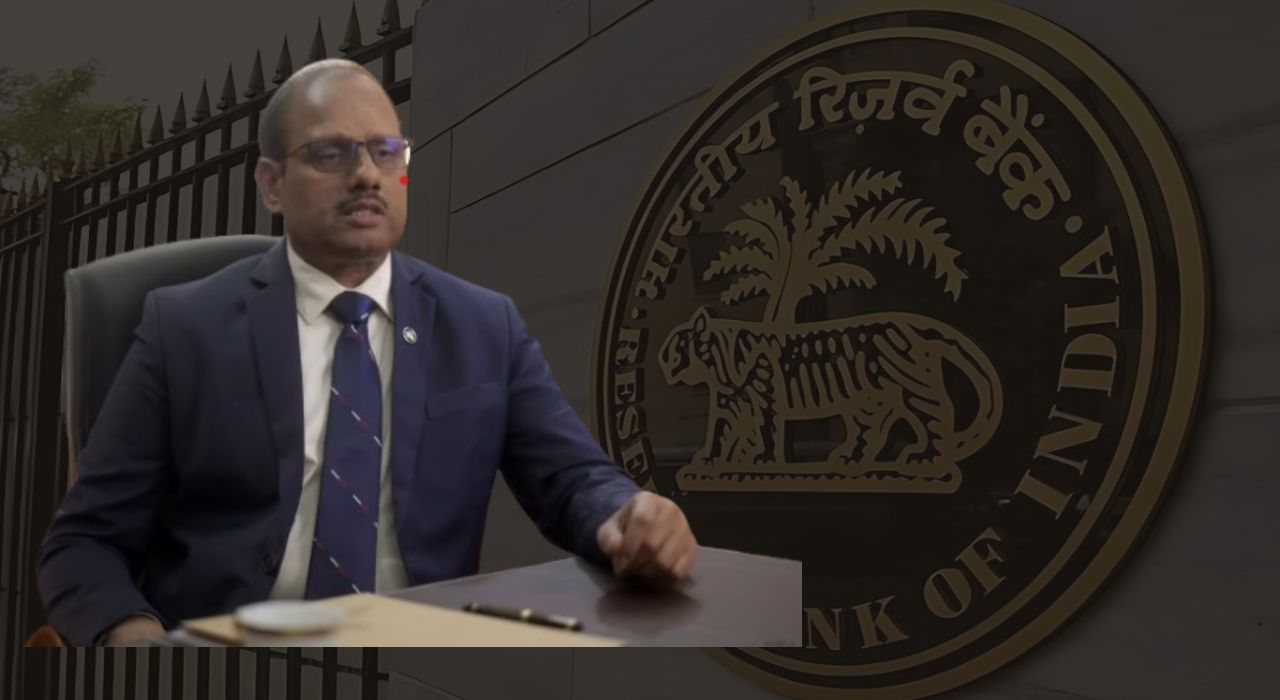Table of Contents
मुख्य विशेषताएं:
-
63 साल पुराने Act की जगह नया कानून – Income Tax Bill 2025 को लोकसभा में 11 अगस्त 2025 को पास किया गया, जो 1961 के Income Tax Act को रिप्लेस करेगा
-
Select Committee की 285 सिफारिशें शामिल – BJP नेता बैजयंत पांडा की अध्यक्षता वाली Select Committee की लगभग सभी सिफारिशों को स्वीकार किया गया
-
डिजिटल-फर्स्ट और Faceless Assessment – टैक्स की प्रक्रिया को डिजिटल बनाने और भ्रष्टाचार को कम करने के लिए faceless system अपनाया गया
-
1 अप्रैल 2026 से लागू होगा – नया कानून अगले साल 1 अप्रैल से प्रभावी होगा, जिससे taxpayers को adjustment का समय मिलेगा

वित्त मंत्री निर्मला सीतारमण का ऐतिहासिक कदम
वित्त मंत्री निर्मला सीतारमण ने 11 अगस्त 2025 को लोकसभा में Income Tax (No. 2) Bill 2025 पेश किया, जो भारत के direct tax code में छह दशकों का सबसे बड़ा सुधार माना जा रहा है। यह बिल पहले फरवरी में पेश किया गया था, लेकिन Select Committee की सिफारिशों के बाद इसे withdraw करके नया version तैयार किया गया।
सीतारमण ने संसद में कहा कि पुराने बिल को “confusion से बचने के लिए” वापस लिया गया था और नया draft “सही legislative meaning” को convey करने के लिए तैयार किया गया है। उन्होंने बताया कि इसमें “drafting के nature में corrections, phrases का alignment, consequential changes और cross-referencing” की गई है।
Select Committee की 285 महत्वपूर्ण सिफारिशें
BJP सांसद बैजयंत पांडा की अध्यक्षता वाली 31 सदस्यीय Select Committee ने चार महीने की गहन समीक्षा के बाद 4,500 पन्नों की रिपोर्ट तैयार की, जिसमें 285 सिफारिशें शामिल हैं। इनमें से 32 को प्रमुख सिफारिशें माना गया है। सरकार ने इन सभी सुझावों को लगभग पूरी तरह से स्वीकार किया है।
Committee के प्रमुख सुझाव:
-
TDS Refund में Flexibility: Late ITR file करने वालों को भी refund claim करने की सुविधा मिलेगी
-
House Property Rules में स्पष्टता: 30% standard deduction municipal tax के बाद लागू होगा, और let-out property पर भी pre-construction interest का फायदा मिलेगा
-
NIL-TDS Certificate: जिन taxpayers की कोई tax liability नहीं है, वे advance में NIL-TDS certificate ले सकेंगे
-
Anonymous Donations: पूर्णतः धार्मिक trusts के लिए anonymous donations पर tax exemption
संरचनात्मक सुधार: 536 Sections में Simplification
नया Bill भारत के tax structure को dramatically simplify करता है। यह 819 sections से घटाकर 536 sections, और 47 chapters से घटाकर 23 chapters में organize किया गया है। शब्दों की संख्या भी 5.12 lakh से घटकर 2.6 lakh हो गई है—लगभग 50% कमी।
S.I.M.P.L.E Principles के आधार पर:
वित्त मंत्री सीतारमण ने इस बिल को S.I.M.P.L.E के सिद्धांतों पर आधारित बताया:
-
Streamlined structure और language
-
Integrated और concise
-
Minimised litigation
-
Practical और transparent
-
Learn और adapt
-
Efficient tax reforms
Digital-First और Faceless Assessment System
नया कानून “Trust First, Scrutinise Later” के approach को अपनाता है, जिससे taxpayers पर अनावश्यक burden कम होगा। इसमें faceless assessment और digital-first processes को बढ़ावा दिया गया है, जिससे human interface कम होगा और transparency बढ़ेगी।
मुख्य Digital Features:
-
Paperless documentation और streamlined compliance
-
Modern dispute resolution mechanisms
-
Technology के माध्यम से assessee के साथ interface को eliminate करना
-
CBDT को digital age के अनुसार नए rules बनाने की अधिक शक्ति
Tax Slabs और Rates: कोई बदलाव नहीं
महत्वपूर्ण बात यह है कि नया Bill existing tax rates और slabs को unchanged रखता है। Budget 2025 में announce किए गए tax slabs वही रहेंगे:
| Income Range | Tax Rate |
|---|---|
| Up to ₹4 lakh | NIL |
| ₹4 lakh – ₹8 lakh | 5% |
| ₹8 lakh – ₹12 lakh | 10% |
| ₹12 lakh – ₹16 lakh | 15% |
| ₹16 lakh – ₹20 lakh | 20% |
| ₹20 lakh – ₹24 lakh | 25% |
| Above ₹24 lakh | 30% |
Section 87A Rebate भी बढ़कर ₹60,000 हो गई है, जिससे ₹12 lakh तक income वालों को कोई tax नहीं देना होगा।
Property Owners के लिए Relief
Select Committee की सिफारिशों के बाद house property income से जुड़े rules में महत्वपूर्ण clarity आई है:
Pre-Construction Interest: अब let-out properties के लिए भी pre-construction interest का deduction available होगा, जो पहले केवल self-occupied properties के लिए था।
Standard Deduction: 30% standard deduction अब clearly municipal taxes के बाद calculate होगा।
Two Self-Occupied Properties: अब तक दो self-occupied properties को NIL annual value के साथ treat करने की सुविधा केवल work-related relocation के case में थी, लेकिन अब यह condition हटा दी गई है।
Assessment Year की जगह Tax Year Concept
एक बड़ा structural change यह है कि “Previous Year” और “Assessment Year” के dual system को हटाकर एक single “Tax Year” का concept introduce किया गया है। यह income earning और tax filing को same period में align करेगा, जिससे confusion कम होगी।
TDS और Compliance में सुधार
नए Bill में TDS rules को भी simplify किया गया है:
-
Senior citizens के लिए interest income पर TDS threshold ₹50,000 से बढ़कर ₹1,00,000
-
Various sections के लिए enhanced threshold limits
-
Late TDS filing पर कोई financial penalties नहीं
-
Equalisation levy (6%) को digital advertisements से हटाना
MSME और Business Definitions में Alignment
नया Bill MSME की definition को MSME Act के साथ align करता है, और ‘beneficial owner’, ‘capital asset’ जैसे terms की clearer definitions provide करता है। Inter-corporate dividends पर ₹8 crore का deduction भी reintroduce किया गया है।
Implementation Timeline और Next Steps
यह Bill अब राज्यसभा में जाएगा और President की assent के बाद 1 अप्रैल 2026 से effective होगा। इससे taxpayers, chartered accountants, और businesses को अपने systems को adjust करने का पर्याप्त समय मिलेगा।
निष्कर्ष: भारत की Tax System में नया युग
Income Tax Bill 2025 का passage भारत के taxation history में एक milestone है। यह 63-year-old Act को replace करके एक modern, digital-first, litigation-resistant direct tax code establish करता है। While tax rates unchanged रहते हैं, compliance procedures, language clarity, और taxpayer-friendly provisions में dramatic improvements आई हैं।
Select Committee की 285 recommendations को incorporate करने से यह Bill stakeholders की concerns को address करता है और India के economic growth को support करने वाला tax framework create करता है। April 2026 से जब यह implement होगा, तब भारत का tax administration significantly more efficient, transparent, और user-friendly बन जाएगा।

Hi, I’m Vikas Kumar — a passionate news blogger with 4 years of experience in digital journalism. I specialize in delivering timely and engaging news content that keeps readers informed and curious.




